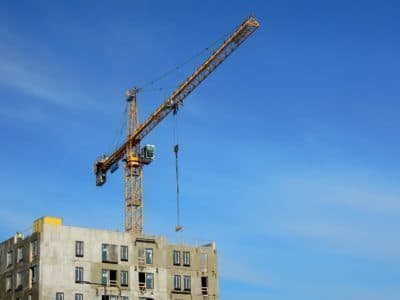For those who plan to buy a house or land or plan to build a house, there are two important things that you have to know beforehand: building coverage ratio (建ぺい率: kenpeiritsu) and floor area ratio (容積率: yousekiritsu). You will have to know these ratios in order to know what size of a house can be built, especially when you want to build a new one. Before we explain them, it is important to note that the Land Use Zones (用途地域) under the City Planning Law (都市計画法) regulate the building coverage and floor area ratios. This regulation only applies to the areas designated as Urban Planning District (都市計画区域).
What is a Building Coverage Ratio (BCR)?
Building Coverage Ratio is the size of the constructed buildings’ floor in relation to the total size of the plotted land. BCR is regulated within 30% to 80% depending on the category of Land Use Zone , and a building has to be constructed within the specified maximum BCR ratio in the zone.
The formula for BCR is as follows:
BCR (%) = (building area) / (site area) × 100
*Building area: the floor space of a building when you look down at it from above (aerial view).
What is a Floor Area Ratio (FAR)?
Floor Area Ratio is the ratio of a building’s total floor area with respect to the total size of land upon which it is built.
FAR is measured between 50% to 1,300% depending on the category of the Lnad Use Zone.
With this formula, the FAR can be found:
FAR (%) = (total floor area) / (site area) × 100
There are several exemption of BCR and FAR;
BCR: the size of eaves and balcony, which are within width one meter from the edge, are not required to be included in calculation
FAR: the size of a basement within one third of floor space and a garage within one fifth of floor space are not required to be included in calculation.
Also, BCR and FAR depend on the Land Use Zone categories upon which building is constructed on. You can find more details for each category from a brochure that published in January 2013 by the City Planning Division, City and Regional Development Bureau, Ministry of Land, Infrastructures, and Transport.
It is highly recommended you check what regulations will be applied to the district in which you are planning to buy a property. In general, a real estate agent discloses such information on flyers, so it’s best to ask an agent for more information.
Have you heard of the word, Toshikeikaku (都市計画: Urban Planning) in Japan?
Based on the City Planning Law, the Urban Planning System was established to support appropriate use of land in urban areas, achieve a pleasant urban environment, and create a townscape with significant features in Japan.
In order to divide the areas urbanization occupies and the areas where urbanization is absent, Japan’s Urban Planning System uses an “Urbanization promotion Area (市街化区域)” and “Urbanization Control Area (市街化調整区域)” framework.
Becuase development and building activities are strictly regulated in Urbanization Control Areas, you have to be careful when you buy a property or land in these areas. When you buy a property or land and you think it seems cheaper than the market price, the location of this property or land could be in Urbanization Control Areas.
If you buy a land in this area, you are not allowed to build a house or any other additional structures on buildings even if the land is empty or clear. We highly recommend you to examine whether a property that you are going to buy is in those areas or not.
You can find more details about Urban Planning System from this broacher, which published in January 2013 by the City Planning Division, City and Regional Development Bureau, Ministry of land, Infrastructures and Transport.







